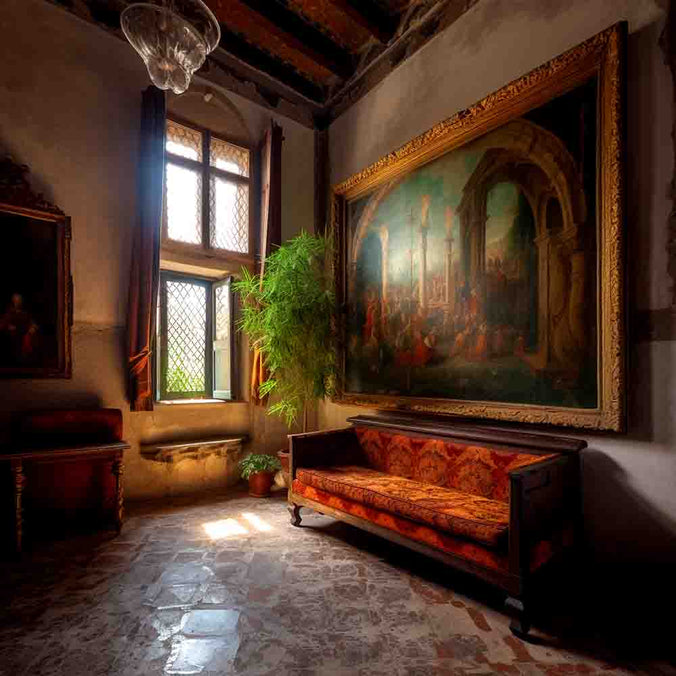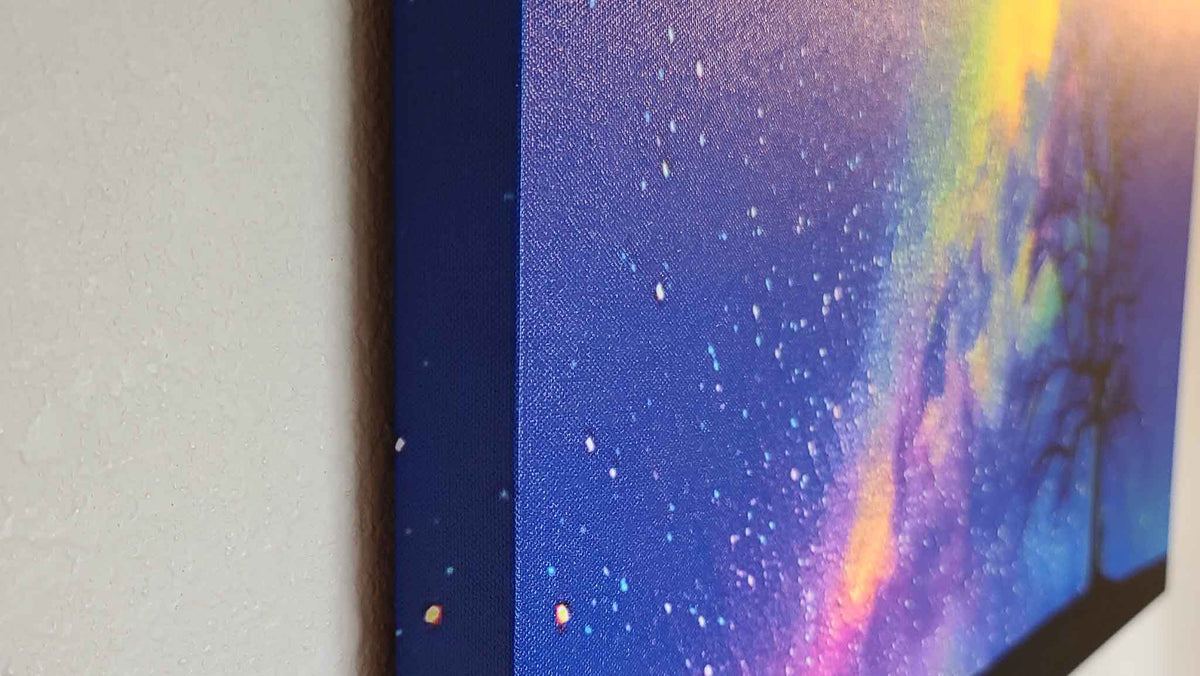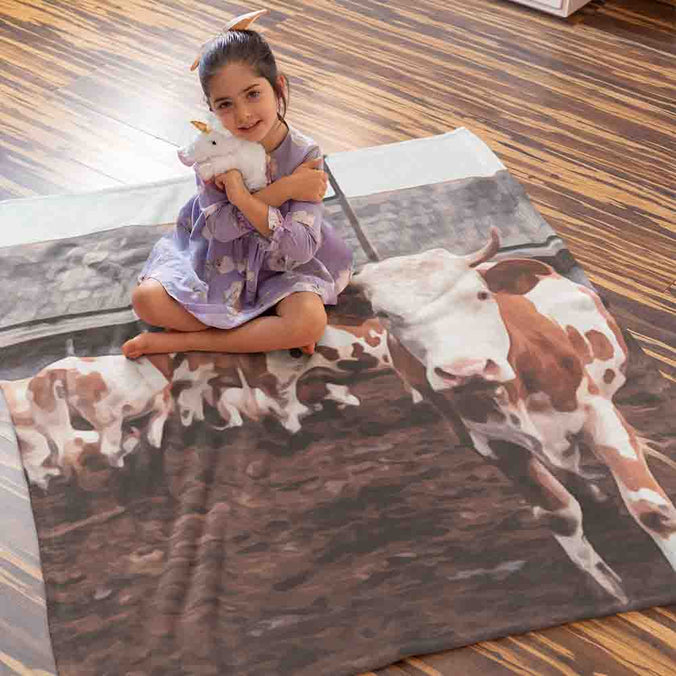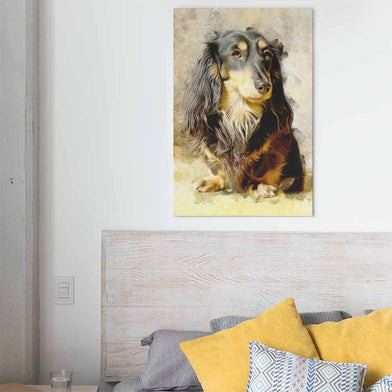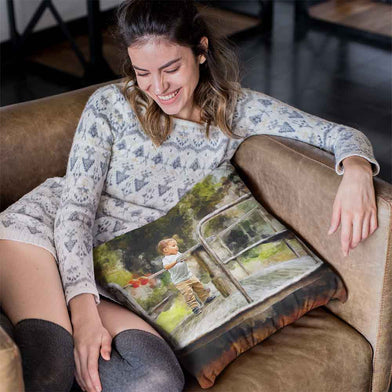Creating Stunning Wall Art: Ideas and Tips for Your Home

Creating Stunning Wall Art: Ideas and Tips for Your Home
Elevate your home's aesthetic with well-curated wall art by exploring diverse styles, drawing inspiration from nature, culture, personal experiences, and various art platforms. Consider factors like personal preferences, room purpose, color schemes, available space, and artwork size when selecting pieces. Optimal wall art placement ensures a visually balanced and engaging space, so create focal points, complement furniture, and utilize design principles like the "Rule of Thirds." Prioritize lighting and environmental factors, and don't be afraid to experiment with different arrangements. By following these guidelines, you can create a captivating living space that reflects your personal style and showcases your unique wall art collection.
Discovering Diverse Sources of Inspiration for Wall Art
Finding inspiration for wall art is an exciting and creative process that involves exploring various styles, subjects, and sources. This journey will help you create a unique and personalized wall art collection that reflects your tastes and enhances your living spaces.
Here are some ideas and methods to help you uncover inspiration for your wall art:
- Explore various art styles: Delve into the world of art by researching different styles, such as abstract, impressionism, minimalism, pop art, or street art. Each style offers a unique visual language and aesthetic, making it possible to find pieces that resonate with you and complement your home's décor.
- Connect with nature and culture: Draw inspiration from the natural world or cultural experiences. Consider landscape photography, botanical illustrations, wildlife paintings, or depictions of historical events and famous landmarks.
- Embrace personal experiences and memories: Use your personal experiences, travels, or cherished memories as a starting point for your wall art collection. Photos from your travels, mementos from significant life events, or artwork by friends and family can bring a personal touch to your space.
- Visit art galleries and museums: Spend time exploring local art galleries, museums, and exhibitions to discover new artists, techniques, and trends. Observing the artwork in person allows you to better understand the texture, scale, and impact of different pieces.
- Browse online art platforms: Utilize the internet to discover a wealth of artwork from around the world. Online galleries, social media platforms like Pinterest and Instagram, and websites of individual artists can provide endless inspiration and help you identify emerging trends.
- Follow interior design blogs and magazines: Keep an eye on popular interior design blogs and magazines to stay updated on the latest wall art trends, color palettes, and display techniques. These sources can also offer valuable tips on how to select and arrange wall art for different spaces.
- Join local art communities or attend workshops: Engage with local art communities by attending workshops, art fairs, or networking events. These experiences can introduce you to new artists and their work, while also providing opportunities to learn about various art techniques and styles.
- Experiment with different mediums: Don't limit yourself to traditional paintings or photographs. Explore other mediums like sculptures, tapestries, or even digital art to create a diverse and dynamic wall art collection.
Remember, finding inspiration for wall art is a personal and ongoing journey. Give yourself the freedom to explore, learn, and evolve your taste as you curate a unique and meaningful collection that reflects your personality and enhances your living spaces.
Choosing the Perfect Wall Art
Selecting the right wall art for your space can be a challenging yet rewarding process. By considering various factors and employing best practices, you can create a cohesive and visually appealing display.
Here are some crucial tips to help you make informed decisions when choosing wall art:
- Determine your personal style and preferences: Start by identifying your preferred art styles, subjects, and color schemes. Reflect on your personality, interests, and the overall aesthetic of your home to create a cohesive and personalized collection.
- Consider the room's purpose and ambiance: Evaluate the room's function and the atmosphere you want to create. For instance, a calming landscape might be suitable for a bedroom, while bold and vibrant abstract art may be ideal for a living space or home office.
- Pay attention to color and theme: Choose wall art that complements the color palette and theme of the room. Use contrasting or complementary colors to create visual interest and harmony. You can also opt for a monochromatic look by selecting art in different shades of the same color.
- Assess the available wall space: Measure the wall area where you intend to display the art, and consider the surrounding furniture and decor elements. This will help you determine the appropriate size, shape, and layout for your wall art.
- Balance size and proportions: Select wall art that is proportional to the surrounding furniture and the wall space. As a general rule, your artwork should cover around 60 to 75% of the wall. Ensure there is adequate space between the art and other elements in the room to avoid overcrowding.
- Plan the arrangement and layout: Experiment with different layouts to find the most visually pleasing arrangement for your wall art. You can create a gallery wall, display art in a linear fashion, or opt for a single statement piece. Use templates or mock-ups to visualize your ideas before committing to a specific layout.
- Focus on quality and longevity: Invest in high-quality, durable art that will stand the test of time. Consider the materials, framing, and protective measures to ensure your wall art remains in good condition for years to come.
- Prioritize lighting and visibility: Ensure your wall art is well-lit and easily visible from various angles and distances. Use natural or artificial lighting to enhance the colors, textures, and overall impact of your artwork.
- Be open to change and experimentation: Don't be afraid to swap out or rearrange your wall art as your tastes and décor evolve. This flexibility allows you to refresh your space and continuously discover new artwork that inspires and excites you.
By following these best practices for choosing wall art, you can create a visually stunning and personalized display that enhances your living spaces and showcases your unique style.
The Significance of Wall Art Size and Placement in Interior Design
Selecting the appropriate size and placement for your wall art is crucial in achieving a harmonious and visually appealing interior. By considering these factors, you can create an engaging and balanced space that showcases your unique style.
Here are some essential tips and insights on the importance of wall art size and placement:
- Establishing visual balance: Choosing the right size of wall art ensures that your space looks proportionate and balanced. Too small a piece can appear lost on a large wall, while an oversized artwork might overwhelm the room. Strive to create a sense of equilibrium between the wall art, furniture, and other décor elements.
- Enhancing room proportions: The size and placement of wall art can influence the perception of a room's size and layout. For instance, vertically-oriented art can create the illusion of higher ceilings, while horizontally-oriented pieces can make a narrow space appear wider.
- Creating focal points: Strategically placing wall art can draw attention to specific areas within a room, making them the focal point. This can be achieved by displaying a statement piece or arranging a group of smaller artworks in a visually engaging layout.
- Complementing furniture and décor: The ideal placement for wall art is 6 to 12 inches above furniture or other decorative elements, such as a mantelpiece or console table. This allows the eye to transition smoothly between the various components of the room, creating a cohesive and harmonious design.
- Planning for optimal viewing: Position your wall art at eye level or slightly below to ensure it's easily visible and appreciated from various angles and distances. Consider the room's layout and traffic flow to determine the best placement for your artwork.
- Utilizing the "Rule of Thirds": This classic design principle suggests that dividing an image into thirds, both horizontally and vertically, creates a more balanced and visually appealing composition. Apply this rule when arranging your wall art to achieve a harmonious display.
- Factoring in lighting and environmental conditions: When placing wall art, consider the lighting and environmental factors that may affect its appearance and longevity. Ensure your artwork is well-lit and protected from direct sunlight, excessive humidity, or extreme temperature fluctuations.
- Experimenting with arrangements and layouts: Be open to trying different arrangements and layouts for your wall art. Create a gallery wall, stagger pieces in a diagonal pattern, or opt for a symmetrical display. Use templates or mock-ups to visualize your ideas before committing to a specific arrangement.
By carefully considering the size and placement of your wall art, you can create an impactful and visually appealing space that showcases your personal style and enhances the overall ambiance of your home.
Selecting and arranging wall art plays a significant role in elevating the aesthetic appeal of your living space. To create an engaging and harmonious interior design, it's essential to find inspiration for your wall art, adhere to the best practices for choosing suitable pieces, and pay close attention to size and placement. By incorporating these elements, you can establish a visually balanced environment that reflects your personal style, complements your existing décor, and ensures your artwork is showcased optimally. Remember to be open to experimentation, consider various arrangements, and always strive for harmony and cohesion in your design choices. By following these guidelines, you can transform your living space into an inviting and inspiring sanctuary that celebrates the beauty and impact of well-curated wall art.
Leave A Reply
Your email address will not be published. Required fields are marked *

